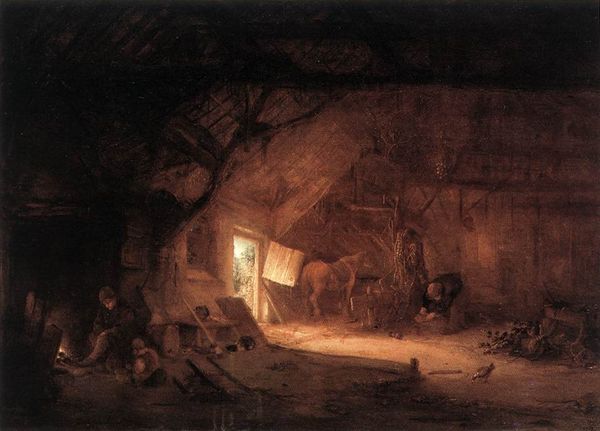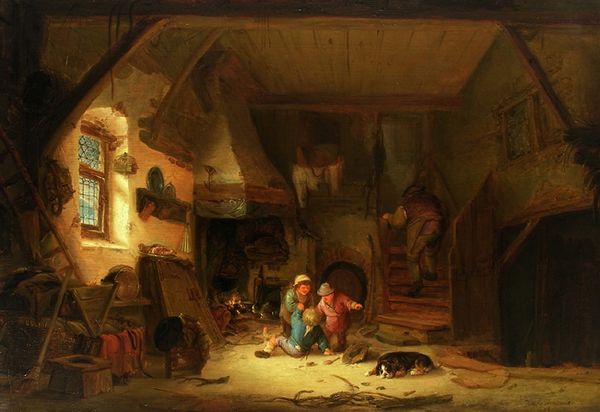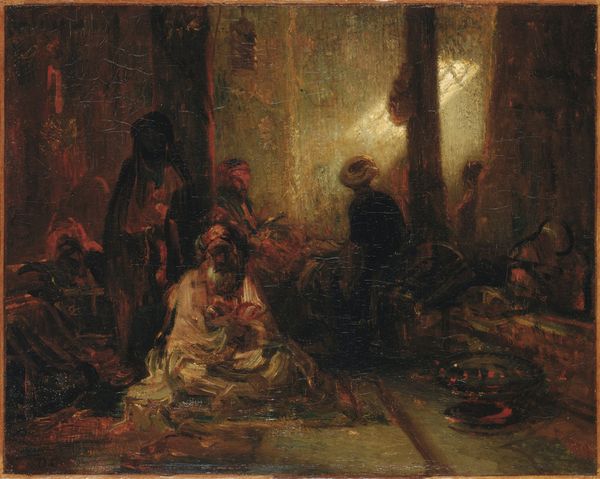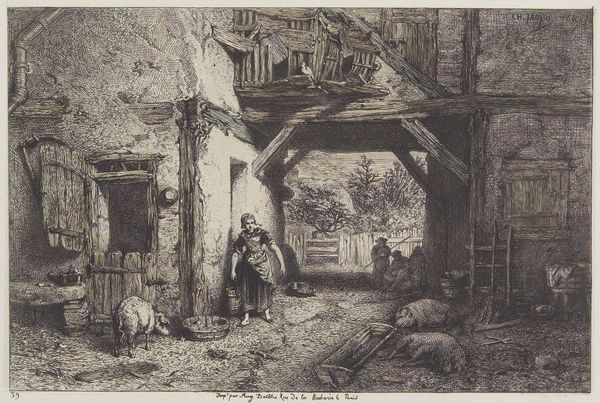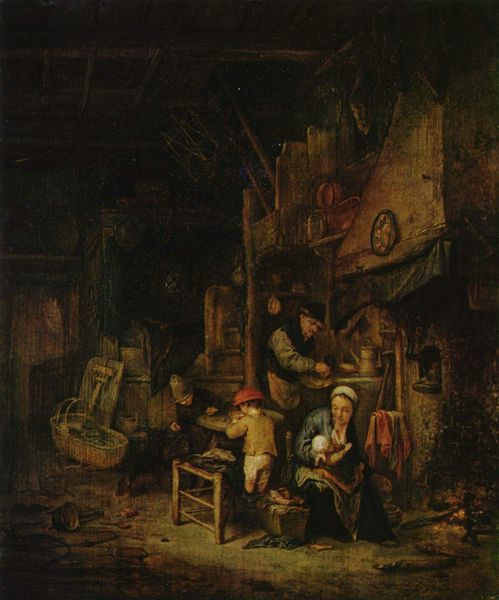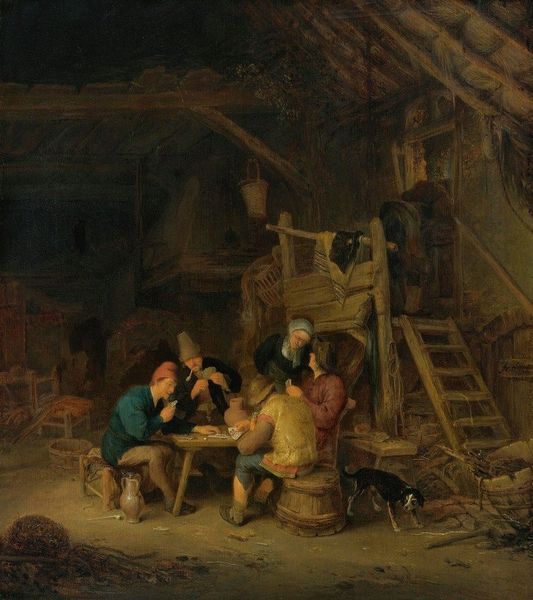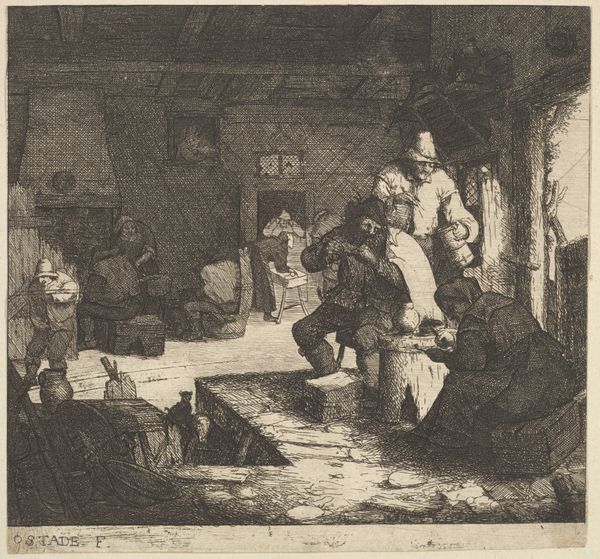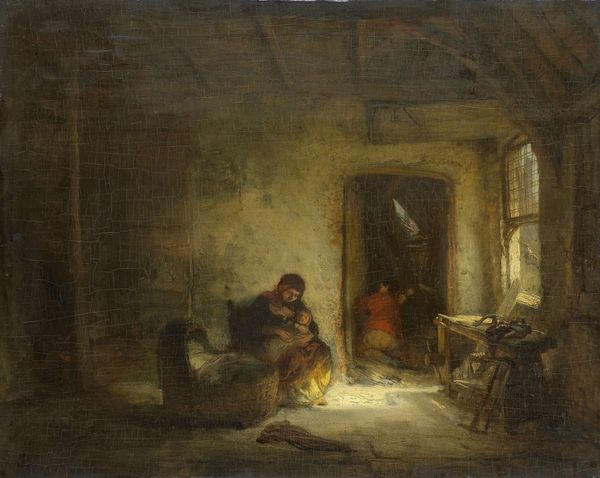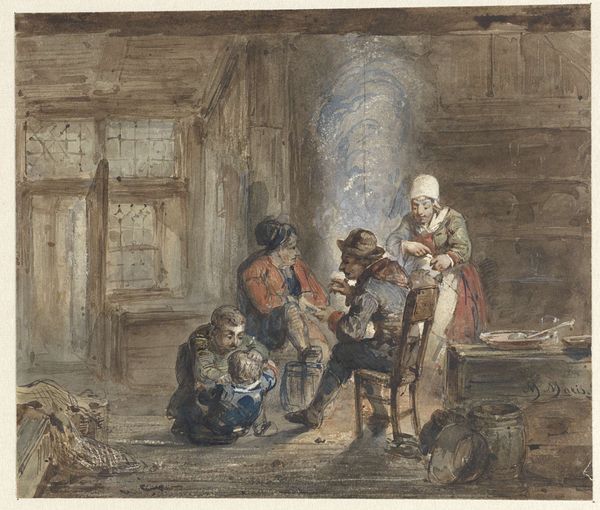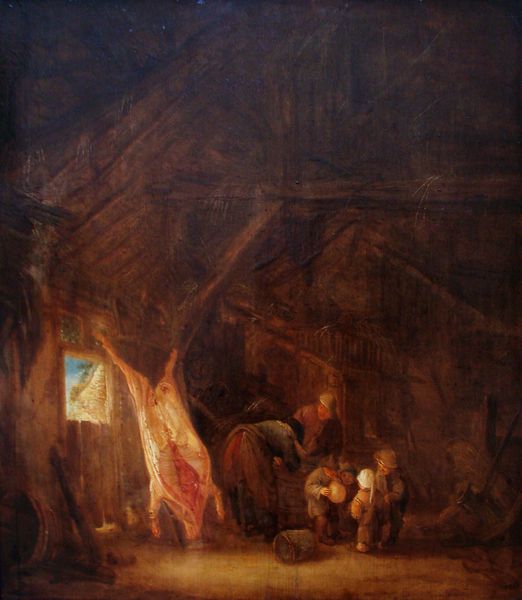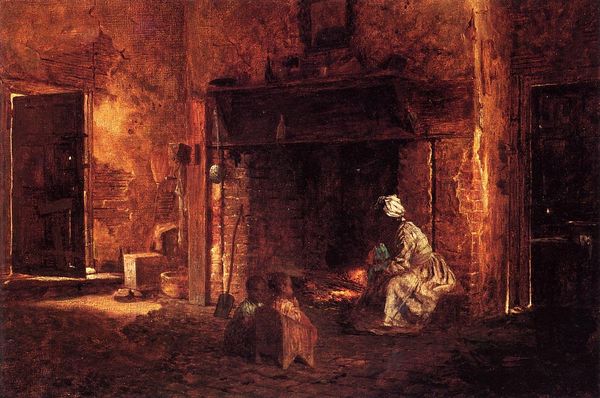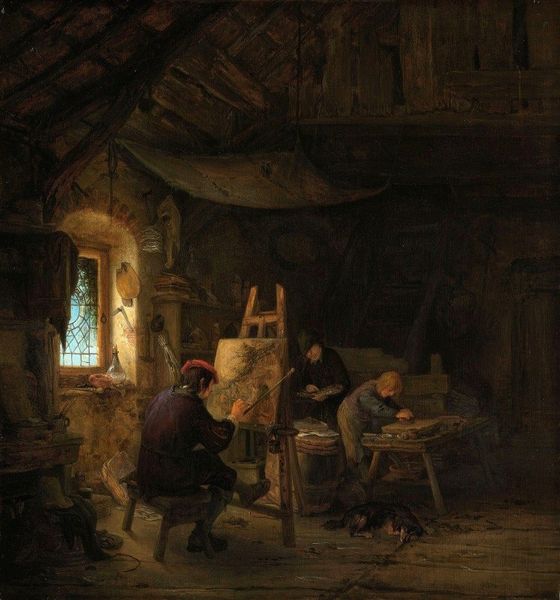
oil-paint
#
dutch-golden-age
#
oil-paint
#
landscape
#
oil painting
#
genre-painting
#
realism
Dimensions: 39.8 x 53.8 cm
Copyright: Public domain
Editor: Isaac van Ostade’s “Cutting Pork Carcass,” from 1642, uses oil paint to depict what appears to be an everyday scene in a Dutch household. It has such a mundane feeling to it, even with the large butchered animal. What is your perspective on this? Curator: Looking at this through a materialist lens, I am immediately drawn to the economic and social dynamics it reveals. This isn't just about "everyday life," but about the labor, consumption, and processes inherent in producing sustenance. Note how the artist meticulously details the carcasses; isn't the hanging animal depicted as an almost industrial element? Editor: Absolutely. The focus on labor is interesting. There are a few figures clustered around, perhaps preparing or processing food. How does this reflect broader societal views? Curator: Consider the Dutch Golden Age. Wealth grew due to mercantile ventures, resulting in new markets and systems for consuming materials. Art itself becomes a commodity. Van Ostade meticulously paints this pork; is it to elevate it, show its intrinsic worth, or something else? Is he celebrating labor? And consider who would have been the consumers of this artwork – those directly engaged in such butchering activities or consumers further up the social chain? Editor: I hadn't thought of it as a record of emerging consumerism. Does the depiction of raw materials change the status of genre painting? Curator: Indeed! By dwelling on the tangible realities, it destabilizes traditional categories. High art was meant to engage philosophical or historical subjects, and genre was associated with ‘low’ subject matters. Does rendering such commonplace events, like butchering, alter traditional classifications, and how does that, in turn, democratize consumption and the social context that entails? Editor: Seeing the painting this way, as part of a larger material exchange, gives it a sharper meaning. Thanks for opening my eyes. Curator: Likewise, your insightful questions sharpened my perception, demonstrating the relevance of a materialist examination for a complete understanding of the painting’s cultural significance.
Comments
No comments
Be the first to comment and join the conversation on the ultimate creative platform.
